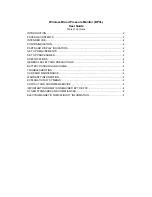
22
5.2. Common sources of error
Note: Comparable blood-pressure measurements always require the same conditions! These
are normally always quiet conditions.
• All efforts by the patient to support the arm can increase the blood-pressure. Make sure you are in a
comfortable, relaxed position and do not activate any of the muscles in the measurement arm during
the measurement. Use a cushion for support if necessary.
• If the arm artery lies considerably lower (higher) than the heart, an erroneously higher (lower) blood-
pressure will be measured! (Each 15cm difference in height results in a measurement error of10mmHg!)
• Cuffs that are too narrow or too short result in false measurement values. Selecting the correct cuff is
of extraordinary importance. The cuff size is dependent upon the circumference of the arm (measured
in the centre). The permissible range is printed on the cuff. If this is not suitable for your use, please
contact your dealer.
Note: Only use clinically approved Cuffs!
• A loose cuff or a sideways protruding air pocket causes false measurement values.
• With repeated measurements, blood accumulates in the arm, which can lead to false results.
Consecutive blood pressure measurements should be repeated after a 1 minute pause or after the arm
has been held up in order to allow the accumulated blood to flow away
5.3. Fitting the cuff
a) Push the cuff over the left upper arm so that the tube points in the
direction of the lower arm.
b) Lay the cuff on the arm as illustrated. Make certain that the lower
edge of the cuff lies approximately 2 to 3 cm above the elbow and
that the rubber tube leaves the cuff on the inner side of the arm.
Important!
The mark (ca. 3 cm long bar) must lie exactly over the
artery which runs down the inner side of the arm.
c) Tighten the free end of the cuff and close the cuff with the closer.
d) There must be no free space between the arm and the cuff as this
would influence the result. Clothing must not restrict the arm. Any
piece of clothing which does
(e.g. a pullover) must be taken off.
e) Secure the cuff with the Velcro closer in such a way that it lies
comfortably and is not too tight. Lay the arm on the table (palm
upwards) so that the cuff is at the same height as the heart. Make
sure that the tube is not kinked.
Note:
If it is not possible to fit the cuff to your left arm, it can also be placed on
the right. However, all measurements should be made using the same arm.
Summary of Contents for BP 3BM1-3P
Page 59: ......
















































